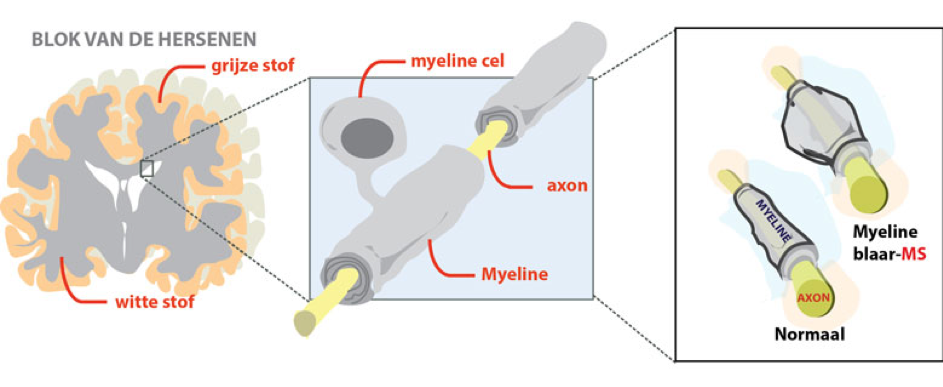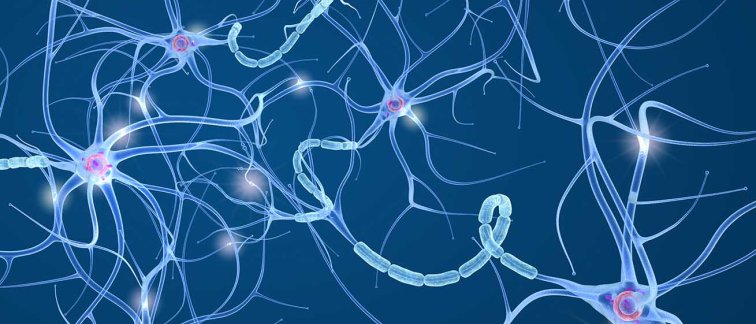Different theories
Demyelination is the main pathological hallmark of MS. There are different theories that seems underlying of this demyelination in MS. For instance, the outside-in theory where MS pathology is initiated by peripherally activated CD4+ T-lymphocytes infiltrating the CNS. Or the inside-out theory, that posits that MS autoimmunity occurs subsequently to primary CNS cytodegeneration. All in all, the underlying mechanism is poorly understood.

Blister-like swelling
The study by Antonio Luchicchi and colleagues shows new evidence for the inside-out theory. Which has previously been addressed by Jeroen Geurts, chair of the dept. of Anatomy & Neurosciences at Amsterdam UMC. In the new Annals of Neurology publication, the researchers describe a number of subtle changes to the myelin that could generate the harmful inflammatory responses, referred to as blister-like swellings formed by myelin detachment from axons. The impaired adhesion of myelin can lead defective expression of glutamate receptors and tethering/adhesion molecules and other morphological alterations. The body wants to clean up these harmful substances, causing an inflammatory response. In the follow-up study, Luchicchi will investigate whether the blisters can indeed cause an inflammatory reaction.
Read the article by Antonio Luchicchi et al. Axon-myelin unit blistering as early event in MS normal appearing white matter.

